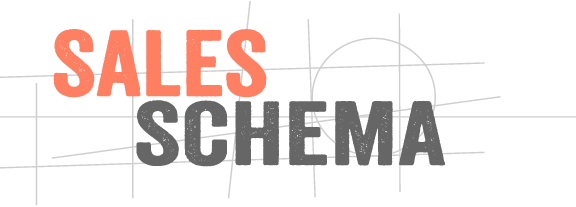I hope you and yours are safe and healthy.
A sales and marketing flack like me should be far from your first source for pandemic-related information, so I hope you’re looking to the experts (if just one person checks themselves before wrecking themselves and others, this paragraph is worth it!).
In this article, I’m going to cover six strategies we’re using to run outreach campaigns effectively and tastefully in the coming months.
But first, you might be asking, is it insensitive to prospect or run outreach right now?
You might be asking, “should I keep doing outreach?”, “should I adjust course?”…
It’s understandable to feel uneasy about sales activity during chaotic times. My buddy Jake Jorgovan at Lead Cookie wrote an excellent and succinct post on this issue.
A few salient points from Jake:
- Combining a lack of prospecting with a down economy can set you up for larger potential downticks.
- It’s tempting to cut sales and marketing budgets when times get tough, but the impact of this action won’t play out for 90-180 days.
- Remote prospecting channels like LinkedIn, email, and phone provide no risk to the spread of COVID-19 so these channels are more important than ever.
In addition, Jake covers the three key situations determining when you should put your foot on the break (which is rare ie. you’re selling gym memberships), versus modifying the strategy, or continuing as usual.
Lessons we are applying over the next few weeks…
1. Walk a fine line.
There’s a dichotomy here. In our messaging, we can’t pretend that this is all ‘business as usual’, at the same time, exploiting the crisis or leaning into it too heavily is insensitive.
So how do you walk this fine line…
2. Patience is powerful.
Often this means asking your prospect for nothing (at first). This runs counter to 99% of the sales messages you probably get hit with, which is why it’s memorable and effective.
Example:
Hey Lisa, I know things are crazy right now and will probably get crazier, but we just wrapped up work on two new food and beverage social media campaigns for ACME and FoodCorpo, and I was hoping to run them by you at some point. I’ll reach back in a few weeks.
3. Use content as a means to an end, not the end itself.
Typically we only want prospects looking at content to de-risk and sell a conversation with our clients.
When we put content in front of prospects, it has to be compelling and easy to digest.
For example, if you’re a branding or social media agency, and you can’t provide data-rich reports and market intelligence, then visuals are your friend.
Instead of decks, portfolios, or sizzle reels, we’ve found simple, screenshots, or personalized videos, to be more effective, since the prospect feels that it was intended for just them (or at least their small cohort), and they don’t have to leave their inbox or click off anywhere to see it.
Examples:
-An iPhone photo of your team at work on an industry-specific or otherwise-relevant project.
-We once used an iPhone photo of a client’s e-commerce fulfillment facility (a differentiator for them) in the body of the email.
4. Re-engage, re-engage, re-engage…
Most of our clients are sitting on a goldmine of opportunities in their existing rolodex or CRM, and small, counterintuitive changes to the way you approach old prospects can have huge impacts.
Pinpointing these leverage points often means broad-framing the sales process and thinking creatively.
Examples:
-Switching up the sender.
Let’s say three months your New Business Director had a meet-and-greet with a CMO, then things went quiet; what might happen if your CEO reached out this time around to talk about a new project you recently completed?
–What’s new that you can talk about?
Good: process changes, advancements, technology, new projects or case studies; Better: an end to a non-compete…
-Asking what decision was made.
Hey Bob, we connected a few months ago and you were considering branding and positioning support – if you don’t mind me asking, what decision did you make there?
^ 99% of the time, the answer effectively is no decision.
5. Prioritize brevity and humanity.
This is all about avoiding the classic trap described by the saying, “I didn’t have time to write you a short email, so I wrote you a long one.”
Brevity is one of the best ways to be conscientious by respecting the reader’s time while communicating that your time is valuable. This dynamic is always in play, but it’s intensified when times are hectic or chaotic. (says the guy subjecting you to a 1k-word article ;).
With outreach, our goal is to check off these boxes for the reader as quickly as possible:
-”Who are you?”
-”Are you in my world?”
-”Do you understand me?”
-”Why should I care?”
-”What should I do next?”
The thing that most people don’t realize is that these boxes can be checked in non-obvious ways that avoid adding length to the message…
Examples:
“Are you in my world?”
This box can be checked by having relevant connections in common on LinkedIn (which is why many of our campaigns start there).
“Do you understand me?”
Box checked by having an industry-relevant title (even if it’s not your permanent title), using the right terms of art, or talking about highly-specific industry-related problems.
For example, we launched campaigns for clients helping them reach non-profits struggling to make Google AdGrants work (a common need/issue for non-profits).
“Why should I care?”
Name drops, done non-obnoxiously or even with a sense of self-aware humor, can check this box…
Brag time: we’ve run campaigns like this for Nike and Reebok.
6. Lean into bigger business problems.
In order to do this, you have to specialize, which I know is the broken-record mantra of the Consultant Industrial Complex (a term I’ve now immortalized forever!).
It’s harder to sell agnostic or unfocused agency services than it was last year or the year before, and I expect this trend to intensify by orders of magnitude in response to a recession.
Brands do not look at the sales and marketing category in a vacuum. When we scour countless responses from prospects, most questions and concerns boil down to this:
“Do you truly understand our business?”
When an agency has a Noah’s Ark of clients on their website, and has not demonstrated the courage to niche, either by industry or a highly-differentiated service, it’s tough to believably answer “yes” to this question.
The good news is that I expect the trend toward small, fractional, often-remote teams to grow in response to this crisis, which is awesome news for boutique agencies IF they position themselves the right way. Agencies who specialize will be more likely to weather this storm by solving bigger and hairier business problems for their clients.
Solving bigger problems does not necessarily mean that the agency of 2020 (and beyond) will have to become a Deloitte-level management consultancy, doing everything under the sun, but it does mean they will have to demonstrate a level of market understanding that can only come from specialization.
Yes, there is risk in niching – it might not work, and maybe you will push away some business. But failing to niche, especially in the coming years, will be MUCH riskier.
Too often, we talk to agencies asking the question, “What work are we passionate about?” when they should be asking, “Where are we best positioned to help?” When the helping comes first, the passion is sure to follow.
Examples of effective niching from our clients and agencies in our network:
-A social media agency focusing exclusively on hotels and hospitality that can ‘close the loop’ between Facebook campaigns and heads-in-beds.
-A creative agency focusing on video services for healthcare that can navigate the needs of doctors and administrators, and give tangible examples of where and how they do this.
-A consumer franchise-focused agency that produces annual reports on the murky and less-understood market for soliciting prospective franchisors.
-An influencer agency with proprietary technology that works with only the top consumer brands. (a compelling process and/or technology can exist in lieu of an industry focus, but these tend to be the exception not the norm in our space).
Some chicken soup.
At the risk of being overly-lofty or pontificating, here’s what we’re prioritizing and encouraging for our clients, and it’s always a work in progress:
-Depth over breadth.
-The long game.
-Courage.
PS: here are a few great ‘chicken soup for the fearful soul’ resources we’ve enjoyed this week:
- Social distancing with humanity from Clockwork
- Why to Start a Startup in a Bad Economy by Paul Graham in 2008
- Maintaining a positive mindset in a bad economy by Jake Jorgovan








